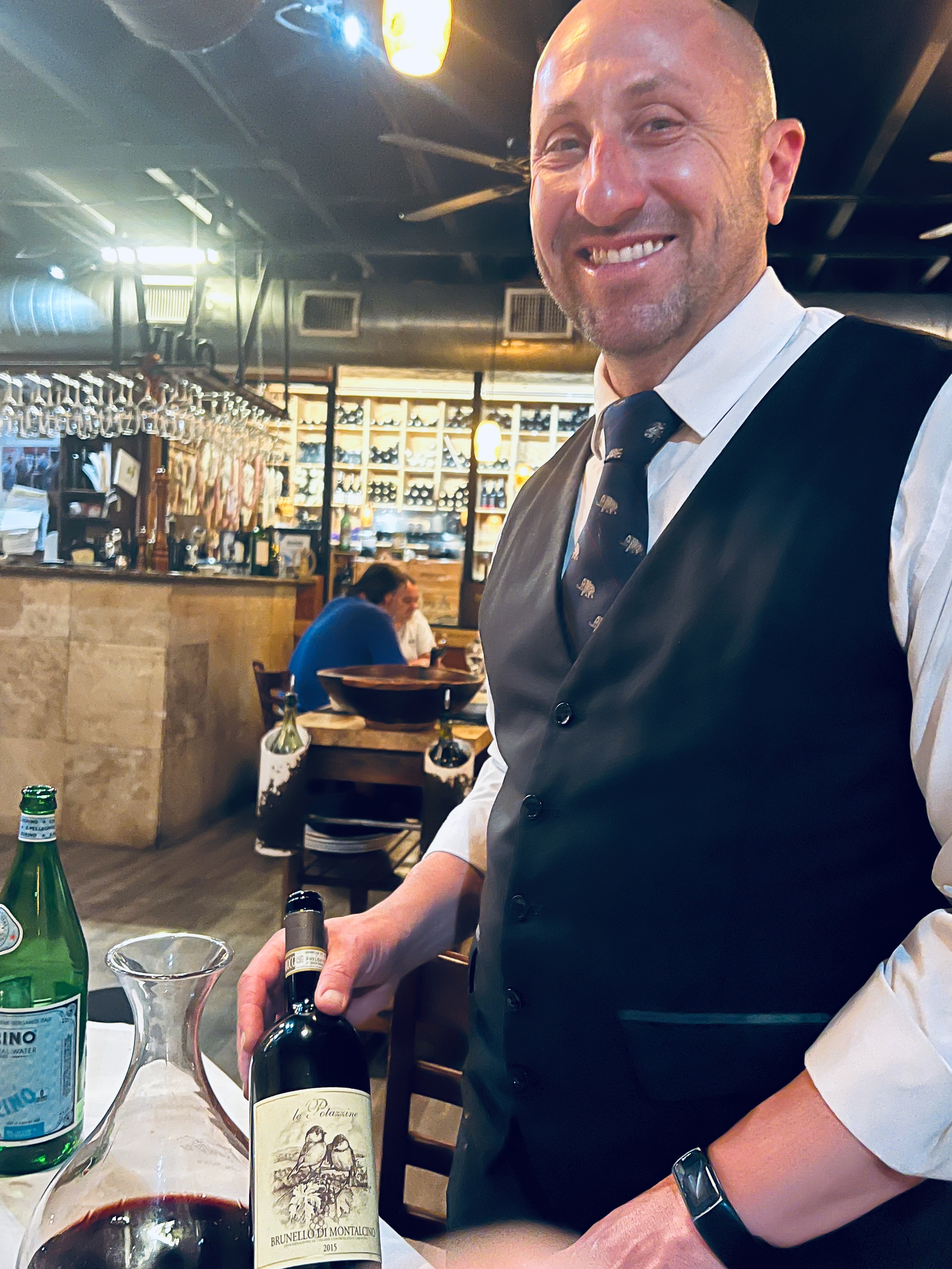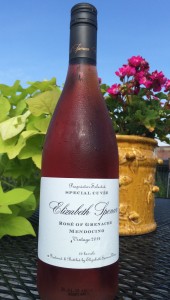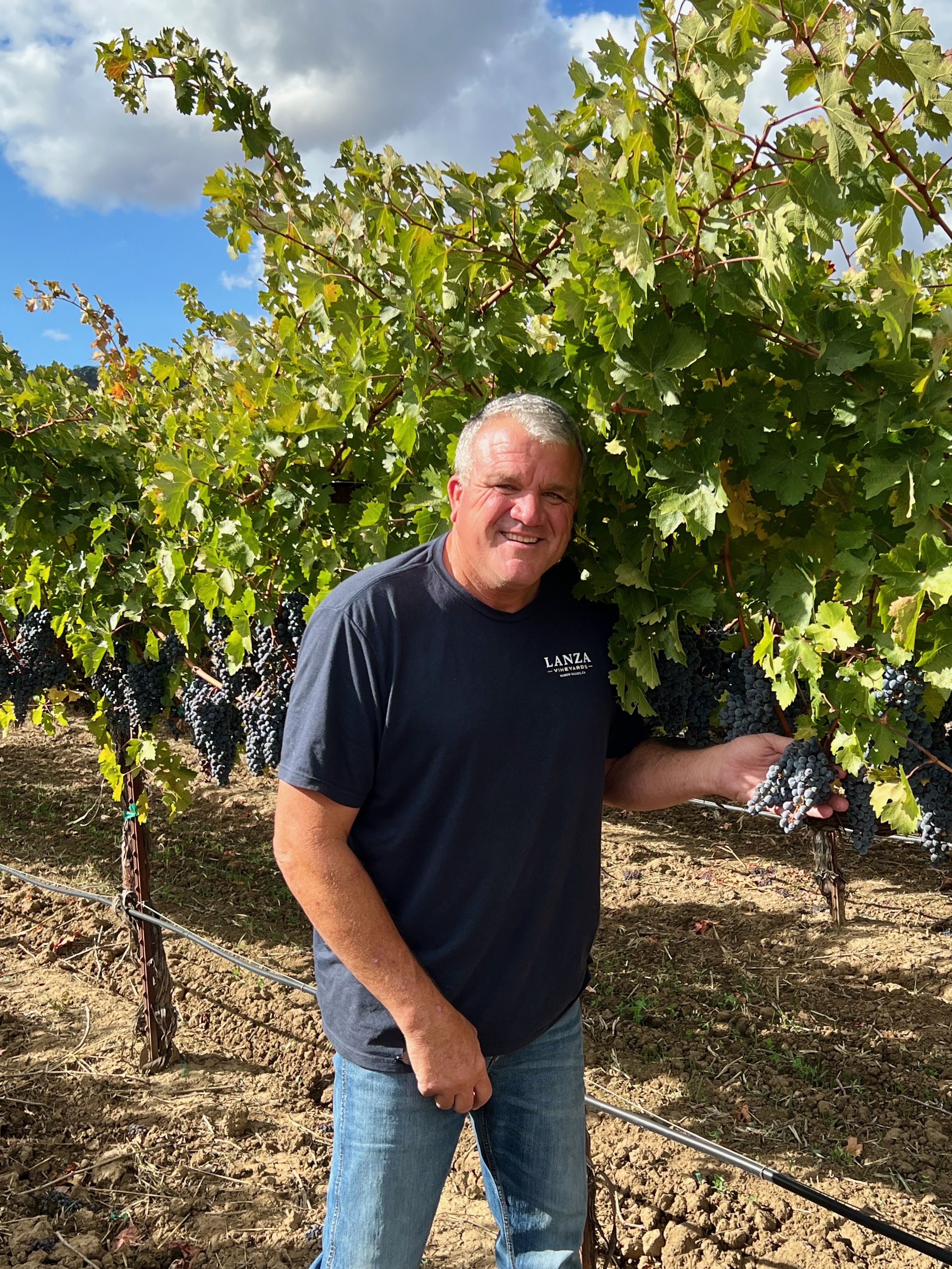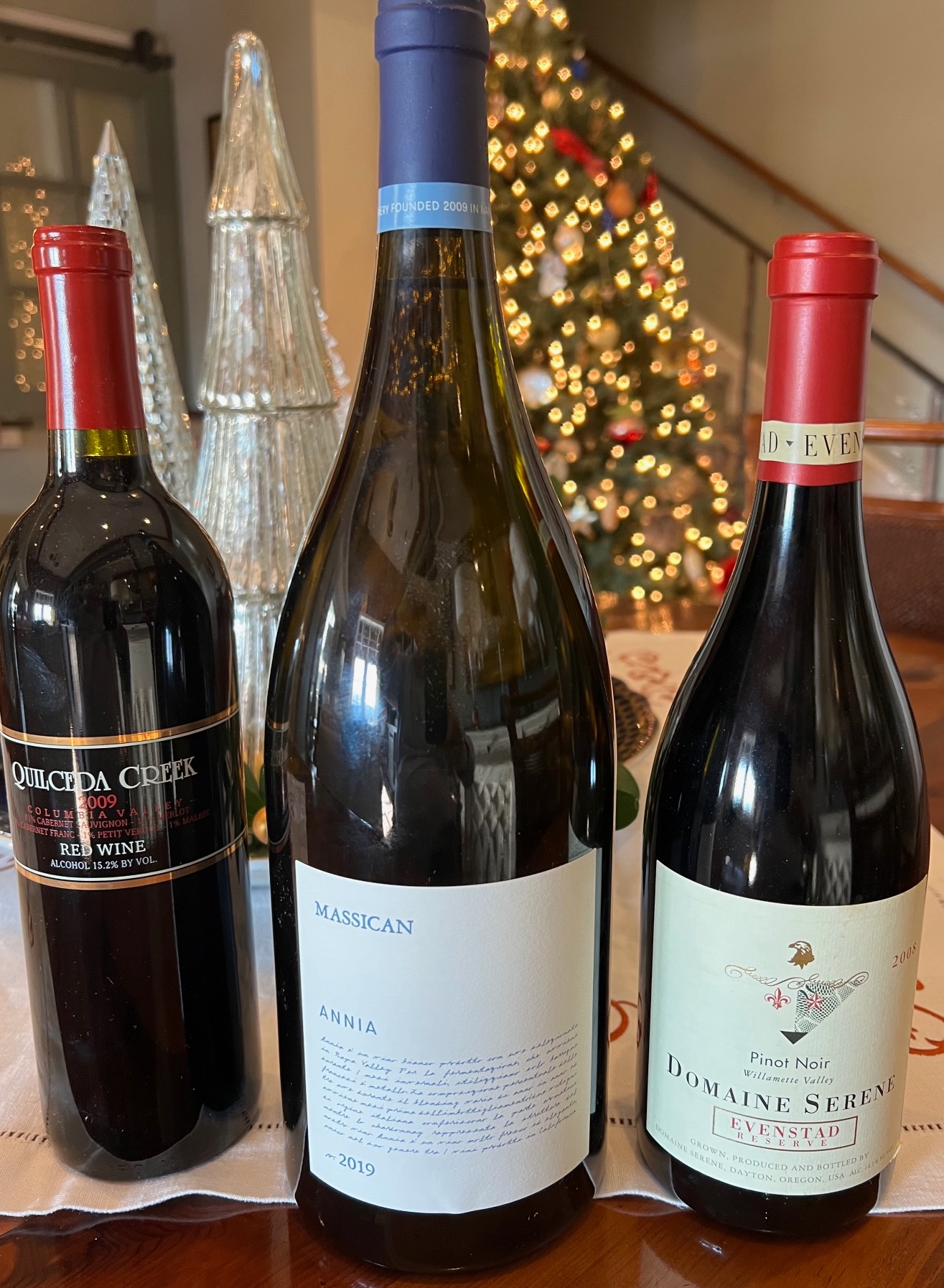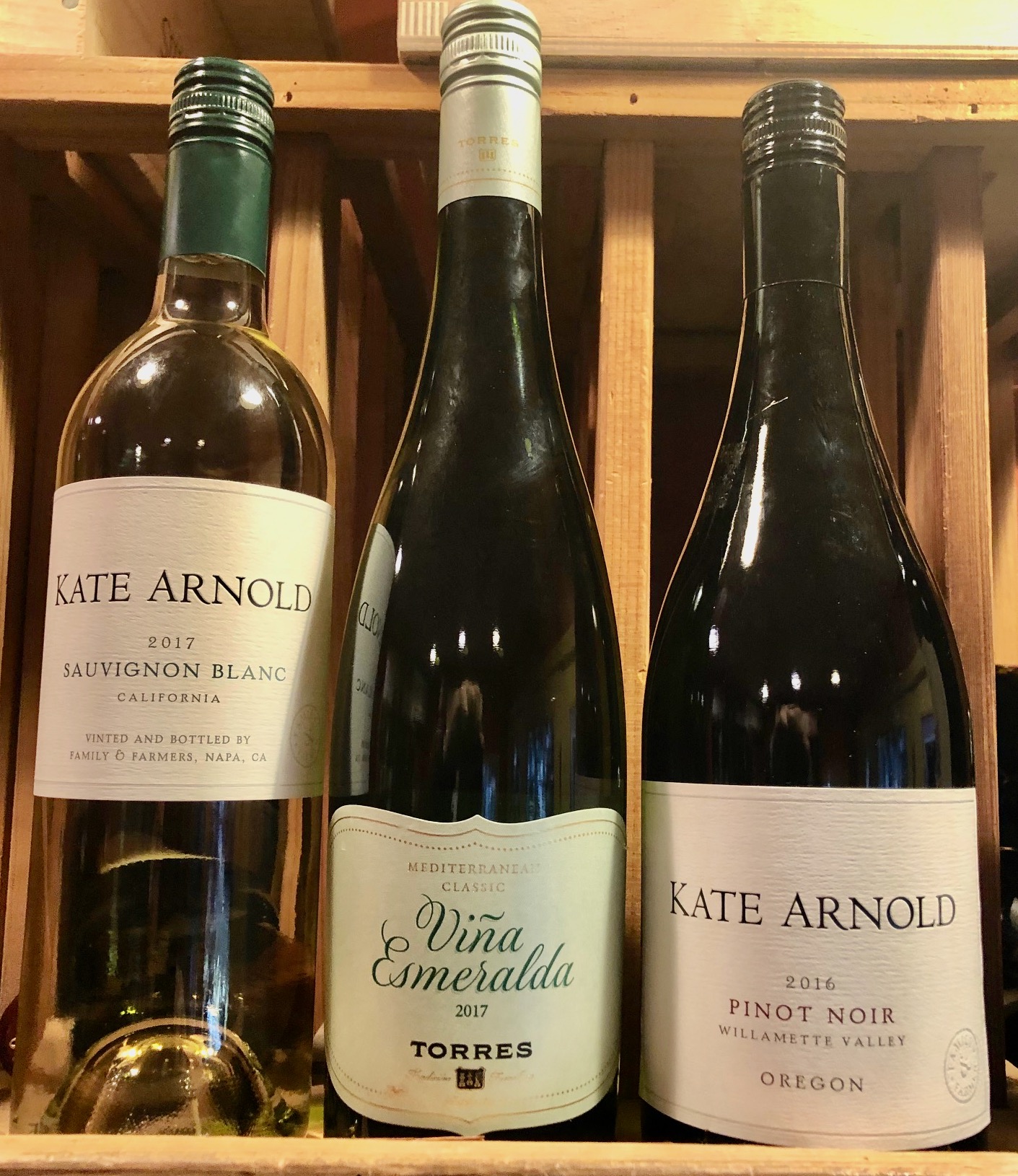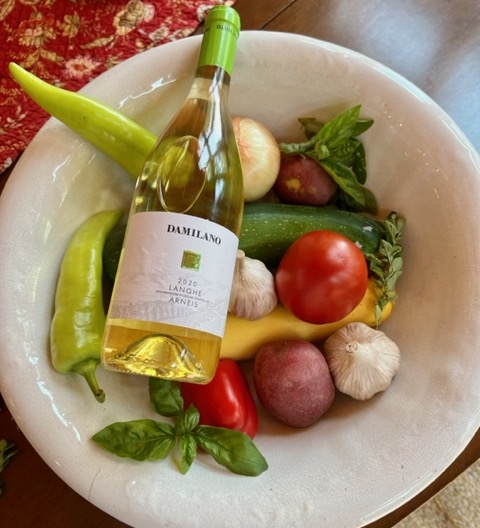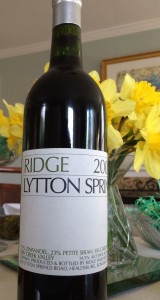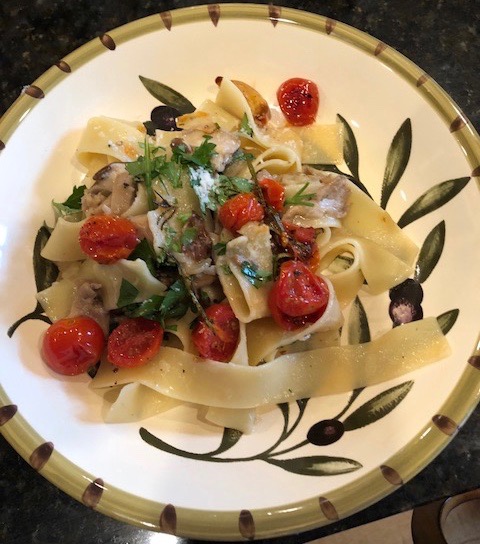Perfect Wines for Rack of Pork Agrodolce
April 13, 2024 by John BrownHomo sapiens are complex beings. We like to think that we know what we like, and then we change our minds and make choices that surprise us. Take wine for example. For years, I had an aversion to drinking any type of sweet wine. But I know that was the result of too many traumatic youthful experiences with sugary, high-octane liquids pretending to be wine. And then, low and behold, I had the occasion to sip a late harvest riesling with dessert at a fancy restaurant and I realized that sweet wines, in moderation, can be truly enjoyable.
Yin and yang, ebb and flow, hot and cold: seemingly incongruous terms that oftentimes can complement each other. How about sweet and sour? “Agrodolce” (Ag-row-dole-chee) is a sweet and sour sauce that is featured in many Italian recipes to enhance meat and fish dishes. Today’s menu showcases a rendition of agrodolce that combines its sweet and sour components to enhance the delectable flavor of roasted pork.
Recently, I purchased a center cut pork rib roast (also referred to as rack of pork) from the great folks at General Steak and Seafood in Charleston. This roast is the pork equivalent of a standing beef rib roast or a rack of lamb. I used the agrodolce, like an Italian barbecue sauce, to baste each piece of meat that I cut from the roast once it was cooked. And, while I paired the roast with an Italian Chianti Classico Riserva (see below), pinot noir would make an equally good pairing with the dish. Pork roast, unlike beef or lamb, does better with light to medium bodied reds like sangiovese and pinot noir. You could also use white wine such as sauvignon blanc, viognier or a lighter-styled chardonnay to pair with the pork roast, but without the pungent agrodolce sauce.
This pork roast was cut from Berkshire hogs – a heritage breed originally imported from England in the early 1800’s. Berkshire meat is considered more juicy, flavorful and tender than meat from American bred pigs. However, I’ve also enjoyed the same type of roast from domestic animals, and the price per pound is about half of what you’ll pay for Berkshire pork. Regardless of what type of meat you choose, it’s important to note that pork roasts are significantly less expensive than beef or lamb. So Enjoy!
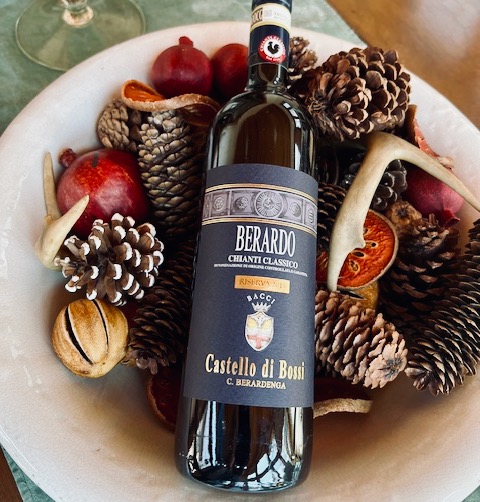
Here are my two wine recommendations for “Rack of Pork Agrodolce.”
2019 Castello di Bossi Berado Chianti Classico Riserva($30) This Brunello-like, ruby red, medium-bodied Sangiovese is replete with dark plum, chocolate and spice flavors with a kiss of oak. It also features a nice dollop of bright acidity that makes it a perfect match to the savory richness of the agrodolce-enhanced rack of pork roast.
2021 Brewer-Clifton Santa Rita Hills Pinot Noir. ($50) One of the coolest climates on the west coast, Santa Rita Hills in Santa Barbara County has a very long growing season and a place where pinot noir flourishes. With aromas of strawberries and spice and flavors of ripe cherries and nuances of vanilla and earthy mushrooms, the wine stands up and enhances the rich roasted pork agrodolce.
Rack of Pork Agrodolce
Ingredients:
One four or eight rib pork roast
Two tablespoons ground black pepper, kosher salt, minced garlic, rosemary and tomato paste
One quarter cup each balsamic vinegar, plain white vinegar and dry red wine
Three tablespoons: honey and pan drippings from pork roast
One half cup of chopped onions
One teaspoon red pepper flakes and chopped parsley
One mashed anchovy
Preparation:
Mix one tablespoon each, salt, black pepper, garlic, olive oil and rosemary
Score the fat side of roast with a knife and rub the mixture all over the meat
Allow to rest in the refrigerator for at least eight hours or overnight
Remove meat from refrigerator one hour before roasting
Preheat the oven to 450 degrees and roast meat for 15 minutes
Lower oven to 325 degrees and roast until internal meat temperature is 145 degrees
Determine cooking time based on 20 minutes per pound
Remove meat from oven and tent up with foil for 20 minutes
Slice the meat into individual pork chops, and baste agrodolce over each piece
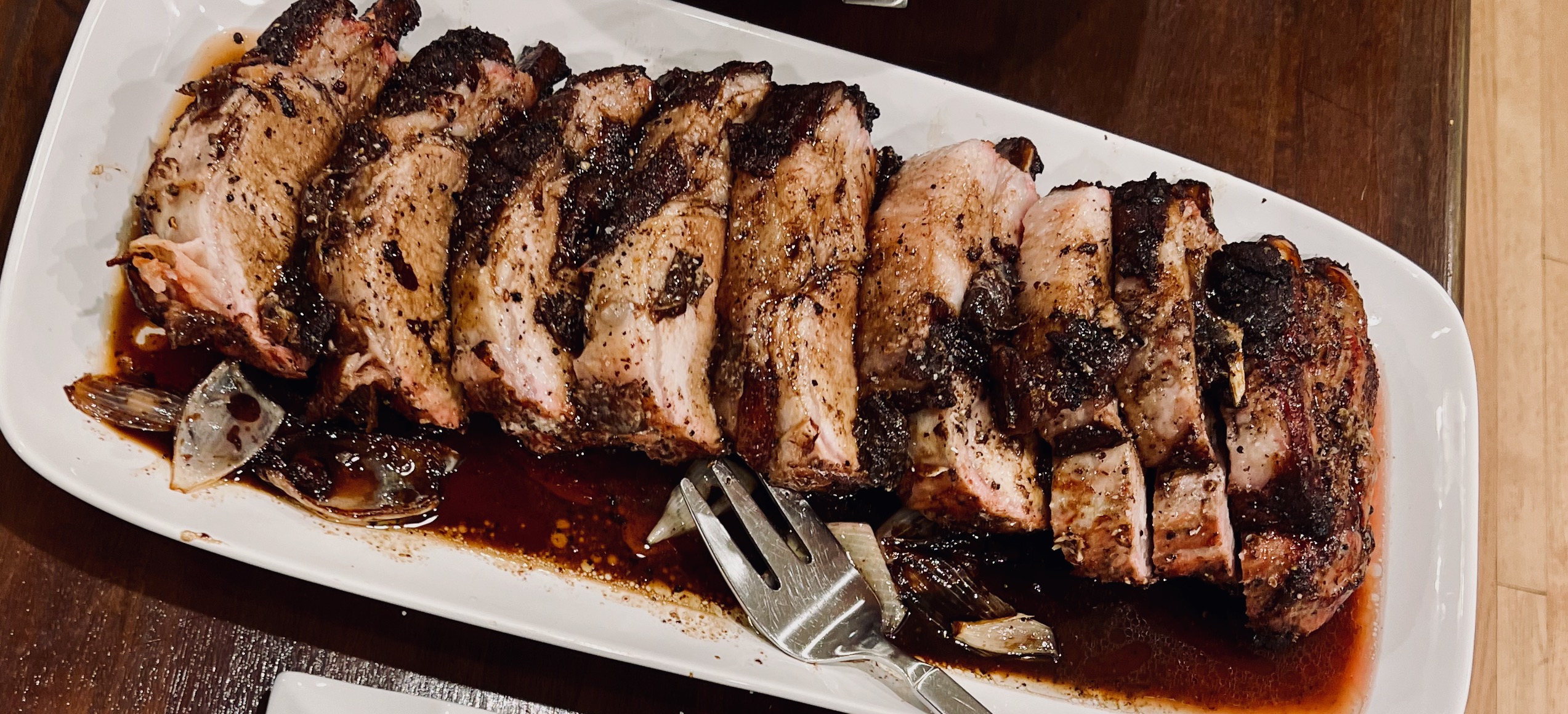
For the Agrodolce:
Saute onions, parsley, anchovy and garlic in a small pan, adding salt and pepper
Add vinegar, tomato paste, pan drippings, wine, honey and red pepper flakes
Simmer agrodolce for about 15 minutes until liquid is reduced and thickened
John Brown is also a novelist. His latest book, Augie’s World, is a sequel to his debut novel, Augie’s War. Both novels are available in print and audio at Amazon. You can find out more about his novels and wine columns at wordsbyjohnbrown.com



